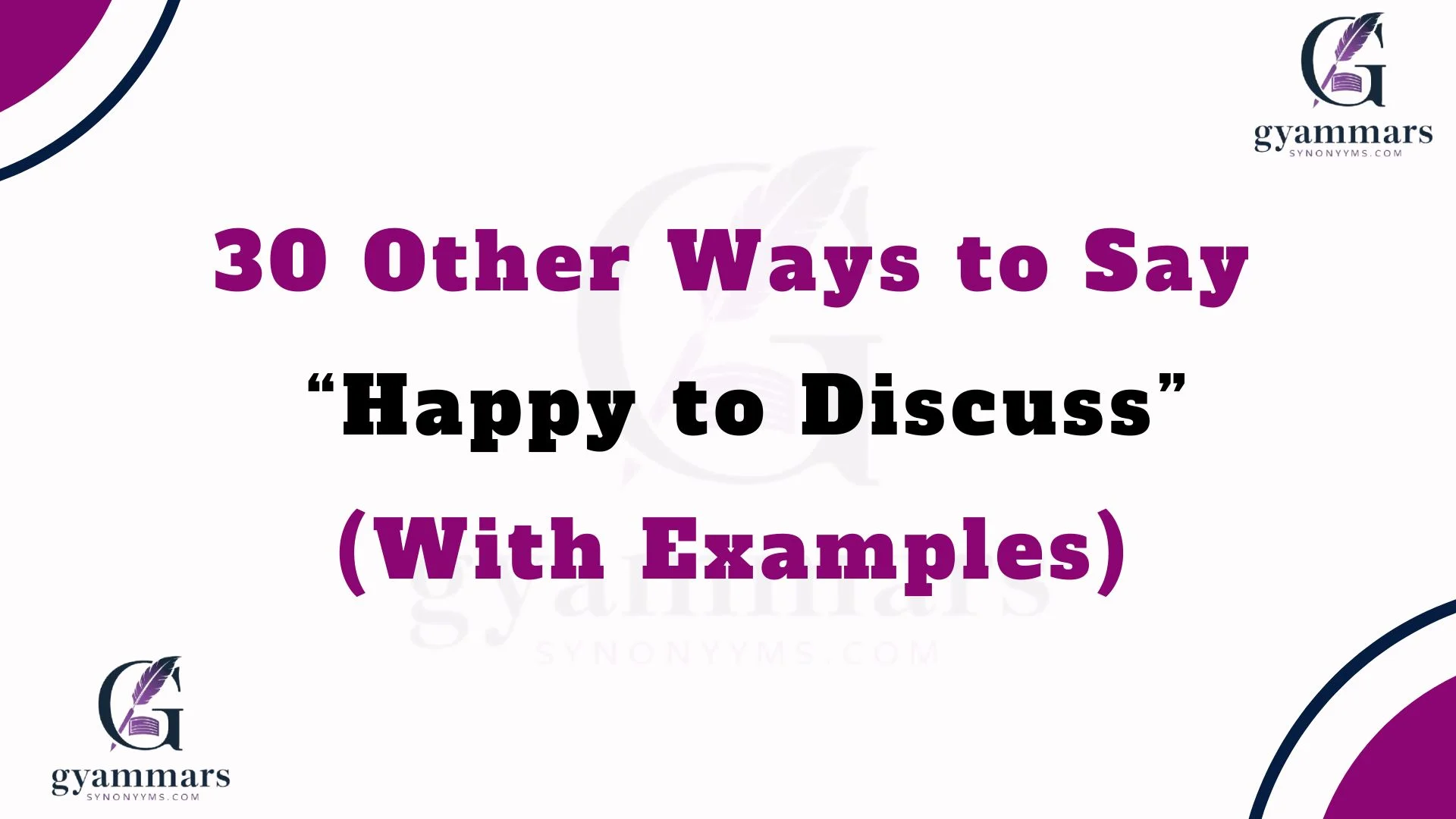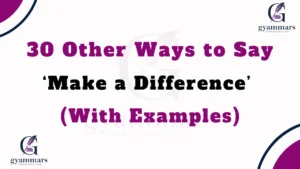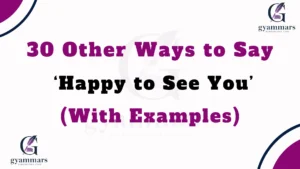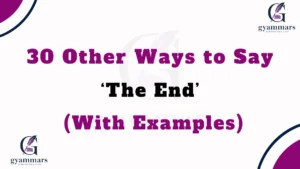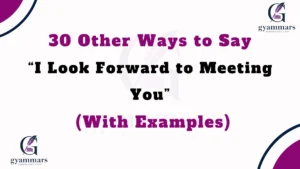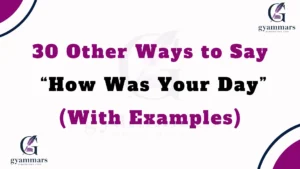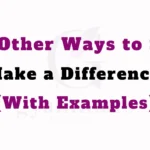Finding the right words to express yourself can make all the difference in a conversation. Saying “Happy to Discuss” is polite and welcoming, but sometimes you might want to convey your openness with a bit more warmth, creativity, or professionalism. These alternatives can help make your messages feel more personal and meaningful, while keeping your tone friendly, professional, or empathetic depending on the context.
What Does “Happy to Discuss” Mean?
Definition: “Happy to Discuss” expresses a willingness to engage in conversation, share ideas, or provide input. It communicates openness, approachability, and readiness to collaborate.
Detailed Explanation: This phrase is often used in professional or personal settings where mutual dialogue is encouraged. It signals that the speaker values the other person’s thoughts and is open to listening.
Scenario Examples:
- “I’m happy to discuss the project timeline whenever it’s convenient for you.”
- “Feel free to reach out anytime; I’m happy to discuss your ideas.”
Best Use: Use when you want to indicate willingness without sounding overly formal or distant.
Tone: Friendly, polite, approachable
Additional Notes: Consider the audience—some alternatives can feel more casual or enthusiastic than others.
Is It Professional/Polite to Say “Happy to Discuss”?
Yes, it is professional and polite, especially in email communication, meetings, and collaborative discussions. However, varying your phrasing can make your communication feel more genuine and tailored.
Pros and Cons of Saying “Happy to Discuss”
Pros:
- Conveys openness and collaboration
- Polite and respectful
- Works in both professional and casual settings
Cons:
- Can feel formulaic if overused
- Lacks warmth or creativity compared to alternative phrases
Synonyms for “Happy to Discuss”
- Glad to Talk About It
- Always Open to Discuss
- Happy to Chat
- Open to Conversation
- Willing to Discuss
- Keen to Discuss
- Eager to Talk About It
- Looking Forward to Discussing
- Ready to Discuss
- Open for a Discussion
- Glad to Go Over
- Pleased to Discuss
- It’s a Good Time to Talk
- Happy to Review
- Open to Feedback
- Ready to Review
- Willing to Talk
- Happy to Explore
- Looking Forward to Chatting
- Open to Suggestions
- Eager to Hear Your Thoughts
- Glad to Engage
- Happy to Collaborate
- Available to Discuss
- Always Glad to Discuss
- Happy to Delve Into It
- Open to Dialogue
- Excited to Discuss
- Pleased to Chat
- Open to Ideas
1. Glad to Talk About It
Definition: Expresses positive willingness to engage in a conversation.
Detailed Explanation: Slightly more casual than “Happy to Discuss,” conveys friendliness.
Scenario Examples:
- “I’m glad to talk about it after the meeting.”
- “We can schedule a call—I’m glad to talk about it anytime.”
Best Use: Friendly professional tone, internal team discussions.
Tone: Warm, approachable
Additional Notes: Works well in verbal communication.
2. Always Open to Discuss
Definition: Shows ongoing availability for conversation.
Detailed Explanation: Communicates reliability and readiness to collaborate.
Scenario Examples:
- “I’m always open to discuss your suggestions.”
- “Feel free to email me—I’m always open to discuss.”
Best Use: Professional and casual settings.
Tone: Encouraging, dependable
Additional Notes: Great for continuous collaboration contexts.
3. Happy to Chat
Definition: Informal and friendly way to express willingness to talk.
Detailed Explanation: Less formal, often used in casual or internal communications.
Scenario Examples:
- “I’m happy to chat over coffee.”
- “We can discuss details later; I’m happy to chat.”
Best Use: Casual settings, peer-to-peer interaction.
Tone: Friendly, relaxed
Additional Notes: Avoid in very formal emails or executive correspondence.
4. Open to Conversation
Definition: Shows a professional and approachable stance.
Detailed Explanation: Indicates flexibility and attentiveness without being casual.
Scenario Examples:
- “I’m open to conversation if you’d like to explore options.”
- “Let me know when you’re free—I’m open to conversation.”
Best Use: Formal email or initial client communication.
Tone: Professional, neutral
Additional Notes: Excellent for negotiation or brainstorming contexts.
5. Willing to Discuss
Definition: States readiness to engage in discussion.
Detailed Explanation: Straightforward and clear, ideal in professional contexts.
Scenario Examples:
- “I’m willing to discuss potential improvements.”
- “We can meet tomorrow; I’m willing to discuss details.”
Best Use: Professional communication, clear commitments.
Tone: Neutral, professional
Additional Notes: Avoid overuse to keep tone warm.
6. Keen to Discuss
Definition: Expresses enthusiasm and interest in discussing.
Detailed Explanation: Slightly more energetic than “happy,” conveys genuine interest.
Scenario Examples:
- “I’m keen to discuss the new strategy with the team.”
- “I’d be keen to discuss ideas over lunch.”
Best Use: Situations requiring enthusiasm and engagement.
Tone: Positive, interested
Additional Notes: Works best in informal professional settings.
7. Eager to Talk About It
Definition: Shows high interest and willingness to converse.
Detailed Explanation: Conveys excitement or anticipation for the discussion.
Scenario Examples:
- “I’m eager to talk about it when you’re available.”
- “We’re eager to talk about it with stakeholders.”
Best Use: Brainstorming sessions or new initiatives.
Tone: Enthusiastic, warm
Additional Notes: Use sparingly to avoid seeming overexcited.
8. Looking Forward to Discussing
Definition: Expresses anticipation for a conversation.
Detailed Explanation: Signals positivity and respect for the upcoming discussion.
Scenario Examples:
- “I’m looking forward to discussing your feedback tomorrow.”
- “Looking forward to discussing the project with you.”
Best Use: Professional emails, polite follow-ups.
Tone: Polite, positive
Additional Notes: Very effective in professional communication.
9. Ready to Discuss
Definition: Shows preparedness for conversation.
Detailed Explanation: Communicates efficiency and proactive attitude.
Scenario Examples:
- “I’m ready to discuss the report anytime today.”
- “We are ready to discuss next steps with the client.”
Best Use: Task-oriented or urgent discussions.
Tone: Confident, professional
Additional Notes: Best for concise, actionable communication.
10. Open for a Discussion
Definition: Polite way to invite dialogue.
Detailed Explanation: Neutral, inclusive, suitable for email or chat.
Scenario Examples:
- “I’m open for a discussion regarding the proposal.”
- “We are open for a discussion on the next project phase.”
Best Use: Professional collaboration and team updates.
Tone: Neutral, approachable
Additional Notes: Slightly more formal than casual alternatives.
11. Glad to Go Over
Definition: Shows willingness to review or discuss details.
Detailed Explanation: Polite and approachable, often used when clarifying or reviewing information.
Scenario Examples:
- “I’m glad to go over the budget whenever you’re free.”
- “Let’s meet—I’m glad to go over the report together.”
Best Use: Reviewing documents or plans.
Tone: Friendly, professional
Additional Notes: Works well in one-on-one meetings.
12. Pleased to Discuss
Definition: Polite expression indicating readiness and positivity.
Detailed Explanation: Slightly more formal, conveys professionalism and warmth.
Scenario Examples:
- “I’m pleased to discuss the upcoming schedule with you.”
- “We are pleased to discuss your proposal in detail.”
Best Use: Formal emails or meetings with clients.
Tone: Polite, professional
Additional Notes: Good alternative when you want to sound courteous.
13. It’s a Good Time to Talk
Definition: Suggests availability and willingness to engage.
Detailed Explanation: Casual and inviting, suitable for spontaneous conversations.
Scenario Examples:
- “Yes, it’s a good time to talk, let’s start.”
- “I’m free now—it’s a good time to talk about the project.”
Best Use: Informal meetings or calls.
Tone: Friendly, relaxed
Additional Notes: Works well for impromptu discussions.
14. Happy to Review
Definition: Indicates willingness to examine or discuss information.
Detailed Explanation: Focused on evaluating documents or ideas together.
Scenario Examples:
- “I’m happy to review your draft later today.”
- “We can meet—I’m happy to review the proposal.”
Best Use: Document review or planning sessions.
Tone: Professional, supportive
Additional Notes: Polished for work-related discussions.
15. Open to Feedback
Definition: Shows receptiveness to others’ opinions.
Detailed Explanation: Emphasizes collaborative and constructive dialogue.
Scenario Examples:
- “I’m open to feedback on my presentation.”
- “We are open to feedback on the design draft.”
Best Use: Feedback sessions, reviews, or team discussions.
Tone: Professional, encouraging
Additional Notes: Great for fostering a collaborative environment.
16. Ready to Review
Definition: Conveys preparedness to examine information or ideas.
Detailed Explanation: Professional, proactive, and efficient tone.
Scenario Examples:
- “I’m ready to review the quarterly report now.”
- “We are ready to review the proposed plan.”
Best Use: Meetings or formal evaluations.
Tone: Confident, professional
Additional Notes: Indicates readiness without being overly casual.
17. Willing to Talk
Definition: Straightforward declaration of availability for conversation.
Detailed Explanation: Simple and clear, suitable for both professional and casual contexts.
Scenario Examples:
- “I’m willing to talk whenever you need.”
- “Let me know—I’m willing to talk about the issue.”
Best Use: Professional discussions and casual chats.
Tone: Neutral, approachable
Additional Notes: Avoids unnecessary embellishment, very versatile.
18. Happy to Explore
Definition: Shows openness to discussing ideas or possibilities.
Detailed Explanation: Emphasizes curiosity and willingness to brainstorm.
Scenario Examples:
- “I’m happy to explore new strategies for the project.”
- “We’re happy to explore different approaches.”
Best Use: Creative sessions or strategy meetings.
Tone: Enthusiastic, collaborative
Additional Notes: Best when ideas are flexible and experimental.
19. Looking Forward to Chatting
Definition: Expresses anticipation and willingness for conversation.
Detailed Explanation: Friendly and inviting, suitable for informal and semi-professional contexts.
Scenario Examples:
- “I’m looking forward to chatting with you later.”
- “Looking forward to chatting about your ideas.”
Best Use: Casual email or follow-up conversation.
Tone: Warm, approachable
Additional Notes: Works best for one-on-one discussions.
20. Open to Suggestions
Definition: Shows readiness to listen to others’ ideas.
Detailed Explanation: Emphasizes collaboration and inclusivity.
Scenario Examples:
- “I’m open to suggestions for improving the plan.”
- “We’re open to suggestions from the team.”
Best Use: Team meetings or project discussions.
Tone: Collaborative, receptive
Additional Notes: Signals respect for others’ input.
Also Read This : 30 Other Ways to Say “Just to Confirm” (With Examples)
21. Eager to Hear Your Thoughts
Definition: Indicates active interest in the other person’s perspective.
Detailed Explanation: Enthusiastic and engaging, encourages dialogue.
Scenario Examples:
- “I’m eager to hear your thoughts on the new proposal.”
- “We’re eager to hear your thoughts about the strategy.”
Best Use: Brainstorming sessions, client interactions.
Tone: Warm, encouraging
Additional Notes: Best for motivational or collaborative contexts.
22. Glad to Engage
Definition: Expresses positive willingness to interact or converse.
Detailed Explanation: Polite and friendly, suitable for both formal and informal settings.
Scenario Examples:
- “I’m glad to engage on this topic with you.”
- “We’re glad to engage in this discussion.”
Best Use: Team meetings, discussion panels.
Tone: Friendly, professional
Additional Notes: Flexible for many conversational contexts.
23. Happy to Collaborate
Definition: Emphasizes working together and shared discussion.
Detailed Explanation: Focuses on partnership and cooperative interaction.
Scenario Examples:
- “I’m happy to collaborate on this project.”
- “We’re happy to collaborate to find a solution.”
Best Use: Professional teamwork, projects, joint ventures.
Tone: Cooperative, professional
Additional Notes: Highlights teamwork and shared goals.
24. Available to Discuss
Definition: States readiness and accessibility for conversation.
Detailed Explanation: Professional and neutral, communicates practicality.
Scenario Examples:
- “I’m available to discuss this afternoon.”
- “We’re available to discuss any questions you have.”
Best Use: Scheduling meetings or discussions.
Tone: Neutral, professional
Additional Notes: Simple and effective for clarity.
25. Always Glad to Discuss
Definition: Indicates consistent willingness and positivity.
Detailed Explanation: Friendly, dependable, and approachable.
Scenario Examples:
- “I’m always glad to discuss your concerns.”
- “We’re always glad to discuss any new ideas.”
Best Use: Team communication, mentoring, or support.
Tone: Warm, approachable
Additional Notes: Shows reliability over time.
26. Happy to Delve Into It
Definition: Suggests readiness to examine a topic thoroughly.
Detailed Explanation: More in-depth, emphasizes detailed discussion.
Scenario Examples:
- “I’m happy to delve into it during our meeting.”
- “We’re happy to delve into it to find the best solution.”
Best Use: Analytical discussions or complex topics.
Tone: Engaged, professional
Additional Notes: Conveys interest in detailed work.
27. Open to Dialogue
Definition: Emphasizes two-way communication and receptiveness.
Detailed Explanation: Professional, neutral, encourages mutual exchange.
Scenario Examples:
- “I’m open to dialogue regarding the changes.”
- “We’re open to dialogue about the project.”
Best Use: Negotiations or formal discussions.
Tone: Respectful, professional
Additional Notes: Encourages collaborative problem-solving.
28. Excited to Discuss
Definition: Shows enthusiasm and high interest in conversation.
Detailed Explanation: Communicates energy and positive anticipation.
Scenario Examples:
- “I’m excited to discuss the upcoming launch.”
- “We’re excited to discuss your innovative ideas.”
Best Use: Informal professional meetings, motivational contexts.
Tone: Energetic, positive
Additional Notes: Use when enthusiasm is appropriate.
29. Pleased to Chat
Definition: Polite and friendly, conveys openness.
Detailed Explanation: Slightly more casual than “pleased to discuss,” friendly tone.
Scenario Examples:
- “I’m pleased to chat anytime you’re free.”
- “We’re pleased to chat about your suggestions.”
Best Use: Informal meetings or team conversations.
Tone: Warm, approachable
Additional Notes: Works best for peer-to-peer interaction.
30. Open to Ideas
Definition: Indicates readiness to listen and consider new thoughts.
Detailed Explanation: Collaborative and inclusive, encourages input from others.
Scenario Examples:
- “I’m open to ideas on how we can improve.”
- “We’re open to ideas from all team members.”
Best Use: Brainstorming sessions or creative discussions.
Tone: Encouraging, professional
Additional Notes: Signals receptiveness and inclusivity.
Conclusion
Finding the right words can transform a simple message into one that feels thoughtful, warm, and engaging. While saying “Happy to Discuss” is polite, using these 30 alternatives allows you to tailor your communication to the situation, audience, and tone you wish to convey.
Whether you want to sound friendly, professional, enthusiastic, or approachable, there’s a phrase here that fits. From casual expressions like “Happy to Chat” to formal options like “Pleased to Discuss”, each alternative helps you communicate openness, collaboration, and attentiveness.
By thoughtfully choosing your words, you make conversations feel more personal and meaningful, strengthening relationships and creating a positive impression in both professional and casual contexts. Remember, a small change in phrasing can make your willingness to engage shine through, leaving the other person feeling valued and heard.
FAQs
Q1. What does “Happy to Discuss” mean in professional communication?
“Happy to Discuss” is a polite way to show openness to further conversation, clarification, or collaboration in a professional or casual setting.
Q2. When should I use alternatives to “Happy to Discuss”?
You can use alternatives when you want to sound warmer, more formal, or more engaging, depending on the relationship and tone of your message.
Q3. Are there casual alternatives to “Happy to Discuss”?
Yes, phrases like “I’m open to chatting” or “Let’s talk it over” work well in casual conversations with friends or colleagues.
Q4. What are the most professional alternatives to “Happy to Discuss”?
Professional options include “I’d be glad to explore this further” or “I’d be happy to elaborate if needed.”
Q5. Can I use “Happy to Discuss” in emails?
Absolutely. It’s commonly used in emails, but swapping it with alternatives like “I’m open to further discussion” can make your emails feel fresher and more personal.

“Emma Rose at Grammar Synonyms is your go-to expert for everything related to language and expression. Whether you’re refining your grammar, searching for the perfect synonym, or looking for creative ways to improve your writing, Emma Rose provides the tools and inspiration you need. With a wide range of resources designed to elevate your communication, Grammar Synonyms helps you find just the right words to make every sentence shine.
